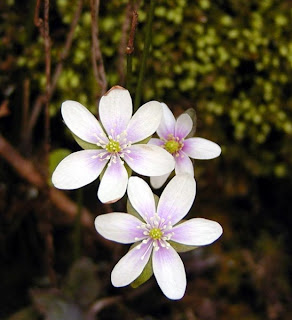I have favorite trails, favorite fishing holes, favorite
songs, favorite roads, favorite movies, favorite books… the list is long. But
it wasn’t until recently that I decided on a favorite word: wanderlust. Or,
wanderlust! with an exclamation point. It’s a word that, if enunciated
properly, should have sort of a growling drawl to it – it’s of German origin,
after all – with a bit of lingering emphasis on the “s” in “lust.” It should
also be accompanied by some sort of vigorous hand gesture, like a fist pump. Of
course, the fact that the word “lust” is a prominent part of it adds the sort
of sauciness to it that makes it almost inappropriate around children or
gentlewomen. I can picture a guy with a cigar clenched between his teeth. I
can’t picture my preacher’s wife saying it. (Okay, actually I can picture Molly
saying it, but she’d at least look over her shoulder first to make sure no one
else was listening.)
Settling on a favorite word has not been a life-long quest.
I haven’t lain awake at night wondering and wrestling over my options. In fact,
I’m not sure having a “favorite word” is something to be proud of or to bother
writing about. After all, only a nerd would have a favorite word, and although
nerds are actually the ones who will run the world, no one wants to be called a
“nerd.” So writing about a favorite word is an exercise in treading on thin
ice.
Nevertheless, a strong desire to travel is something I
somehow picked up from my mother, either through nature or nurture or both.
When I was just a kid, she’d entrust the road maps to me as we’d drive from
Florida to California or New York. I was the navigator, and I still am. I enjoy
surrounding myself with maps and planning a trip almost as much as I enjoy
actually travelling.
But I lust after the travelling, too. The actual getting in
the car and driving for days, noticing the odd names of the towns and roads,
hearing the change in accent of the waitresses in the restaurants, watching the
landscape change, asking for tea and getting a cup of hot tea (instead of iced
tea as God intended). I’ve never been very interested in flying, mainly because
it’s like being in a time – or in this case, a space – machine. You step into
the chamber in Tennessee, sit in a seat for a few hours, and step out in
Colorado. It’s magic.
People who prefer to travel by air don’t really have a
serious case of wanderlust. They have destinationlust, I guess. They like to
visit new places, without truly travelling. They like to be there, but they don’t like to actually go there. I know that sometimes flying just makes more sense – both
time-wise and money-wise – but I still prefer a long, hard road trip that
starts at dawn and ends well after sunset, and maybe even dawn tomorrow. I’ll blame it on my Dutch and
English ancestors who apparently had strong Puritanical tendencies which require
a dose of pain and suffering in every meaningful life experience.
I’ve been on a few hikes with folks who seem totally
unconcerned about where we started, where we’ll end, and how we’ll get there.
They just enjoy being outdoors. While the rest of us huddle around the map to
check the names of creeks and ridges and the topo lines that define them, they
sit quietly, eating an apple and staring at the trees or listening to the river
sing. Now that I’ve written that, I see that just walking and then sitting is a
perfectly reasonable approach to a day outdoors, but I can’t do it. I’ve gotta
know where I am and where things are.
Which reminds me… a
rather significant event in my life happened at 35° 33’ 44” North and 83° 48’
2” West. It was the Fourth of July… [To be continued.]



